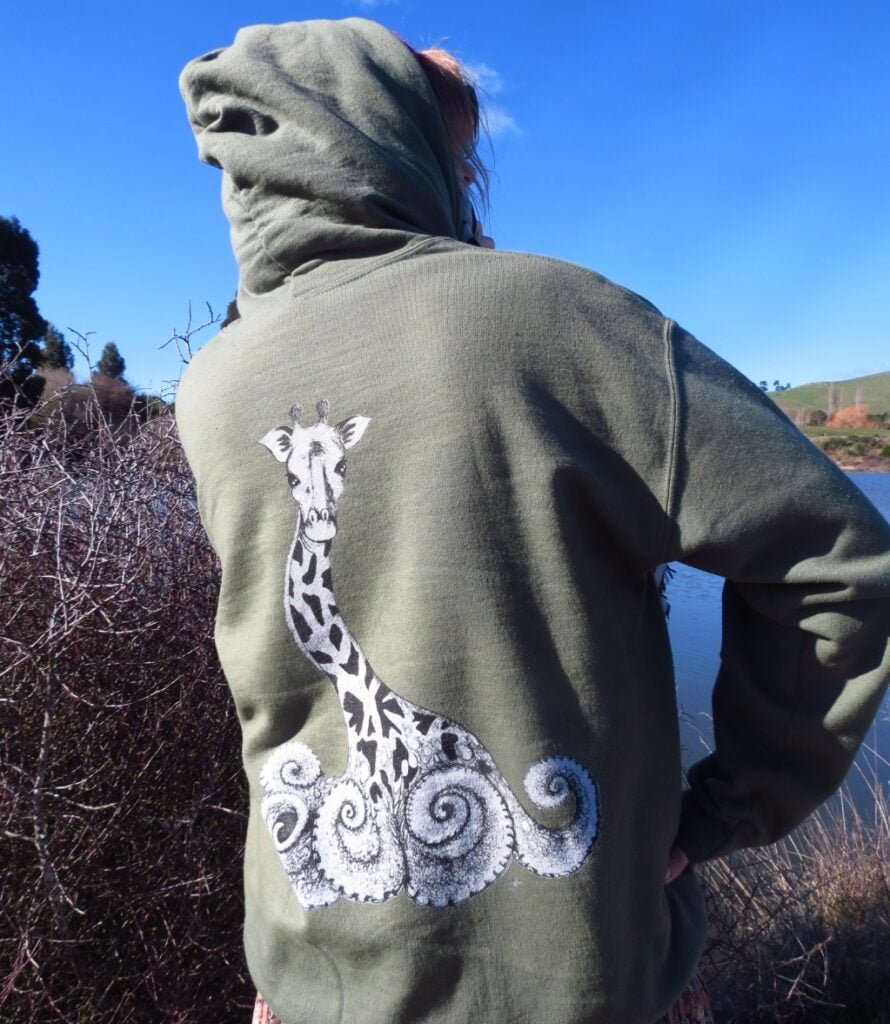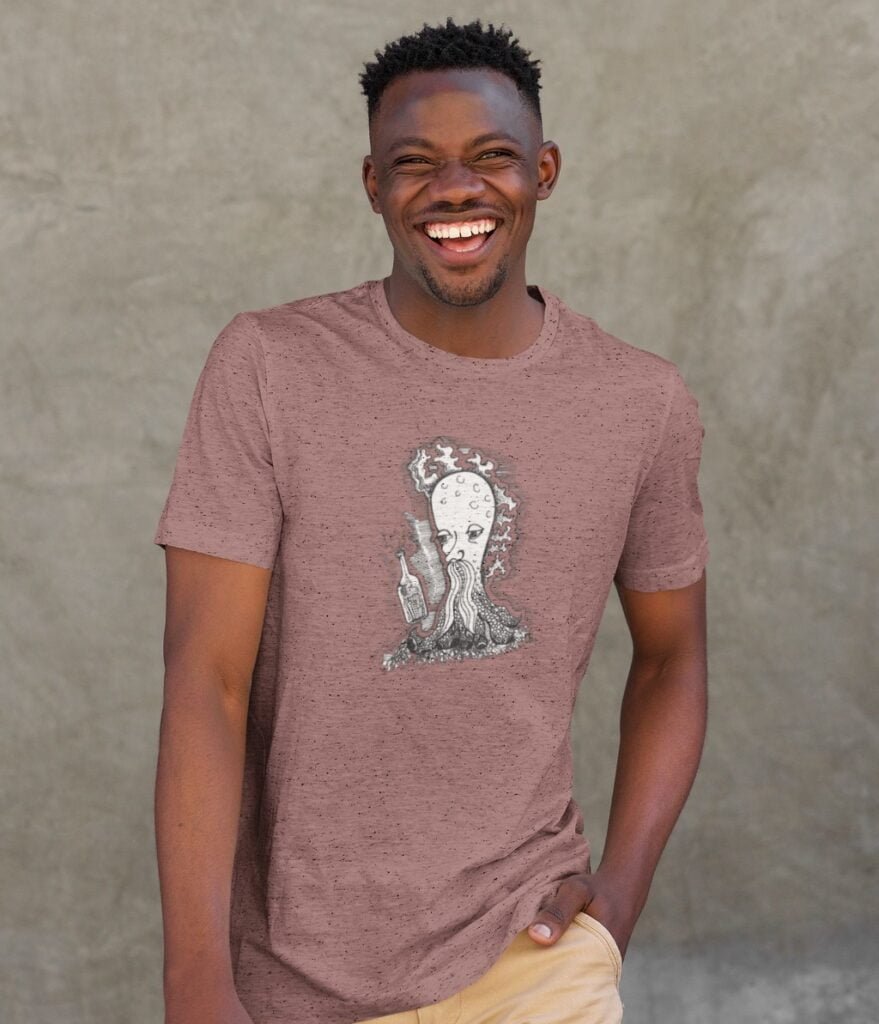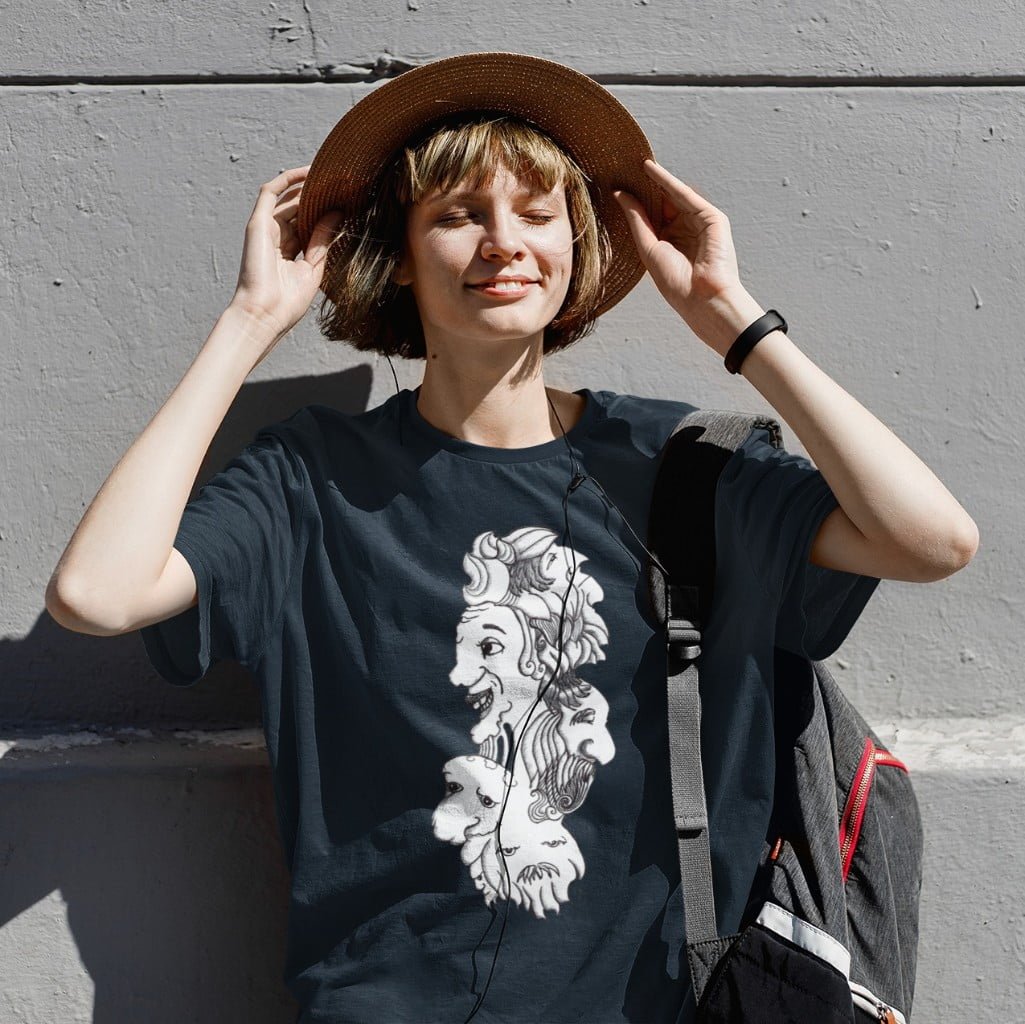Ethical Choices
Hi there,
Welcome and thank you for taking the time to read another entry in my Blog ‘Life of an Artist’.
Today I’m going to write a bit about the ethical choices we have in our lives, and the challenges we face when it comes to making ethical choices as an artrepenuer.
When I first started my little Shop of Art, I was just so excited that Print on Demand was even a possibility, so I started designing products without even thinking about where and how they were being made. However, now that the initial excitement has settled I remembered my values and am going to review and research where the products (especially clothing) I offer are being made and how. I shall also change and adjust products according to my values, as I believe strongly that every choice any individual or small business makes, can have an impact -positive or negative- depending on what we choose. I am very passionate about having a positive impact on the world one person and business at a time so here I’ll share with you my findings and changes.
Firstly I’d like to start by explaining a bit about my personal ideal when it comes to ethical choices.
I guess it can be divided into 3 categories:
1. Environmental Impact of production – ideal: Organic
2. Fair treatment of the people involved in the production – ideal: Fair Trade
3. No harm to animals in any part of the production – ideal: Cruelty-Free

Environmental Impact
The environmental impact is a broad topic when it comes to garment printing, as there are many parts to the production. Firstly the growing and sourcing of cotton or whichever materials are being used for the products. This means what impact does the sourcing of the material have on the land. Are harmful chemicals being used? Is it having to travel long distances and so forth.
Another factor when it comes to the environmental impact, especially clothing production, is the use of dyes, how much water is being used and what is happening with the waste water? All of these aspects I shall be researching when it comes to searching for ethical print providers.
My business -on the current date of writing this- uses services called Print on Demand. I am currently using a company called Printify, which utilizes many different print providers based in various locations around the world. This has the benefit of not having to get all my products printed abroad (mostly in America and Europe) and shipped all the way to me in New Zealand, to then send them to the customer, wherever they may be. This reduces the amount of transportation significantly, which is a massive factor on the environment. It also reduces the amount of waste as I’ll never have too much stock printed, in case one of my items really does not want to sell. The only items produced are those that are ordered and then that item gets sent straight from the printing facility to the customer!
As the business owner, I get to choose which print provider and also which manufacturing company to use for each item I create in my little Shop of Art. There are quite a lot of limitations in this process such as choice in colours, sizes, styles and products, especially if I strive towards being ethically ‘choice’, as they say here in New Zealand.
On the plus side there is a larger awareness for environmentally friendly options in general as more people are becoming aware of the overall impact bad practices have on the planet. Yet to be ethical usually means to be slightly higher in price, as the practices that harm the environment are often the cheapest practises; getting things done unnaturally quickly by using harmful chemical sprays.
I’m a strong believer that wherever there is a demand there will be a supply, and it is becoming very apparent that companies are now catering for the demand of eco-friendly products.
Fig 1: “New Zealand Falls” – Oil on Board by Natalie J Cheetham
Fig 2: “Wisdom of the Warmth” – Oil on Clay Board by Natalie J Cheetham

Fair Treatment of People
This is a very important aspect for me and my choices, as I don’t want to be supporting sweatshops or any kind of unethical treatment of humans, who create the products we use.
It’s a very challenging aspect also, as the price of cheap labor means the affordability of products. In our every day life we have become so used to things being a lot cheaper than they should be, if fair wages were being paid. So as consumers, we have become very used to cheap prices without really questioning at what cost.
There are however a whole range of Code of Conduct and programs such as Fair Trade or Fair Wear that companies either have to comply with or can be a part of to make sure the workers are being treated ethically and are being paid a fair wage. There are also a wide network of independent surveyors to make sure companies are complying with ethical standards.
I’ll be researching whether the companies I have chosen or will choose comply to these Codes of Conduct or/and are part of any ethical programs.
No Harm to Animals
This aspect of production should be quite minimal as animals are usually used for testing products such as medicines, beauty products and food. I doubt that animals are being harmed in the process of manufacturing the items I will be selling in my shop, however I will still research this element to make sure, as you sometimes never know what goes on behind the scenes.
Clothing Brands
Fig 3: “Girafftipus” – On Hooded Sweatshirt by Natalie J Cheetham

Gildan – Hoodies
Environmental Impact?
According to my research I’m finding very mixed reviews about this company. Here’s a list of my findings
- They came 32nd in the Wall Street Top 100 Most Sustainably Managed Companies in the World
- 2nd among only 3 apparel companies
- They operate under their own Environmental, Social and Governance Program (ESG)
- Their vision for Making Apparel Better® is committed to reducing their footprint, which has lead to them investing into “innovative technologies and solutions to help optimize our use of natural resources, minimize waste, and maximize reuse and recycling.”
- They source most of their cotton from the USA under strict US Department of Agriculture and US Environmental Protection Agency guidelines
- 44% of the energy they use is renewable, and they even launched a biomass steam generation facility in 2007 to support that.
Here is the source for this information https://thehub.ssactivewear.com/press/the-sustainable-story-you-didnt-know-about-gildan
And this article backs up the finding of the first one https://bestunder250.com/is-gildan-a-good-brand/#Gildan_Has_The_Best_Environmental_Social_Practices
It’s always hard to know how bias a site is when writing about a large company, and all of the statements they extracted come straight from top end employees talking about the company. But they do seem to be making ethical choices when it comes to their production.
Fair Treatment of People?
This subject is highly debatable for this company, as there are very mixed reviews. According to this article by The Guardian, all of their claims to being sustainable and all of the above is a facade to save their reputation, as they have had many allegations of treating their staff appallingly. They even closed an entire factory to stop a union from forming.
This may be a very optimistic and naive opinion, but I somehow also don’t think it’s fully fair to completely boycott a company for mistakes they have done over 10 years ago or more, a lot can change.
Conclusion for Gildan
Due to the heavy allegations and bad reputation they have had in the past, I can’t know for sure how they are treating their employees, so I think I’m going to switch the manufacturing brand of my hoodies. This may mean that I’ll have to charge a bit more for my hoodies but I think that’s a small price to pay to know that I’m not part of the big cog of exploitation!
Fig 4: “Happy Little Blob” – On Organic Cotton T-Shirt by Natalie J Cheetham

Stanley/Stella
Environmental Impact?
According to my research this company ranks very high in sustainable practices on many eco-conscious webpages. Here’s what I have found:
- They use a very high proportion of eco-friendly materials including Global Organic Textile Standards (GoTS) cotton
- They use low impact non toxic dyes in all their products
- Their use of eco-friendly materials reduces impact on the earth by limiting the amounts of chemicals, water and waste water being used and released during the manufacturing and dying process.
And here’s their Sustainability Report 2021
Fair Treatment of People?
They seem to be very conscious and have a lot of programs in place to ensure that employees in all of their factories are treated fairly and in good conditions.
- They are a member of the Fear Wear Foundation, a foundation which ensures a safe work environment, fair wages and other subsidies.
- They have in place a Code of Conduct that covers all of the ILO Four Fundamental Freedom principles
“These categories are: freedom of association and the effective recognition of the right to collective bargaining, the elimination of forced or compulsory labour, the abolition of child labour and the elimination of discrimination in respect of employment and occupation.”
Conclusion for Stanley/Stella
Overall this manufacturing company from Belgium looks very ethical in the way they treat their employees and in the way they source their materials. This is their mission statement on their webpage “From the beginning, our mission has been to create high quality garments in the most responsible and ethical way. We therefore integrate sustainability into everything we do, making deliberate decisions about who we work with, how we work & what materials we use.” 1
Then after seeing them pop up on many independent sites (see below), which discuss and recommend eco-friendly apparel companies for t-shirts and hoodies, I am quite convinced Stanley/Stella live up to their promises.
Their webpage mentions a lot of practical approaches of how they handle the environmental affect of manufacturing clothing. I feel happy and comfortable using this company to source a lot of my clothing range. They have a fantastic range of organic t-shirts via Printify, which I’m excited to launch with my very own designs here soon! 😀
Links:
https://directory.goodonyou.eco/brand/stanleystella
1https://www.stanleystella.com/en-gb/our-path-to-sustainability
https://www.stanleystella.com//content/files/pdf/FWF-Social-Report-2019.pdf
https://blog.bellacanvas.com/fast-fashion-done-right/
https://oopsvegan.com/en/blog/sustainable-tshirts
https://www.realthread.com/blog/sustainable-shirts-the-4-best-ecofriendly-tshirt-brands
Fig 5: “Bottled World” – On T-shirt by Natalie J Cheetham

Bella Canvas
Environmental Impact?
Bella Canvas have some very lovely principles and a lot of media publications about how they run things in their manufacturing facilities. Here’s a few points I found whilst researching:
- They are very conscious about keeping a lot of the production process local in LA or California, doing all of the dying and cutting there
- Hence they have to abide to the strictest EPA regulation in the world
- They only use environmentally friendly dyes, which have been Blue Sign Approved
- Utilize ultra-efficient dye machines, decreasing the amount of water by 7x less than other manufacturers = saving approx. 24mio gallons of water a week
- Usage of filtration systems to ensure no chemicals or dyes end up in the water system
- Solar energy powers sewing and cutting facilities, and motion sensored LED lights and sky lights
- They even have electric car charging stations at some factories
- I can’t seem to find out much about where they get the cotton from but it is Airlume Cotton.
Fig 6: “Multiple Personalities” – On T-Shirt by Natalie J Cheetham

Fair Treatment of People?
This looks very promising throughout this company.
- All of their facilities whether in Northern or Central America are WRAP certified
- A lot of their production is kept local in America as they were built on the foundations of wanting to create jobs in the USA, meaning 100% of their spinning, yarning, dying and cutting is done in California.
- Most of their sewing, however is done in Central America, but with very good ethical practices in place and with this statement, “We only work with factories that have the same high ethical and environmental standards as our Platinum WRAP Certified U.S. factory and have a team of people who work to ensure everything is sweatshop-free and above board – meaning fair wages and pleasant working conditions.” 2
- To ensure this is true the factories they use are under the Better Work Program in calloboration with the UN International Labour Organization (ILO) and the International Finances Corporation (IFC)
- Both facilities are devoted to improving working conditions, human rights and social justice, especially in developing countries.
Conclusion for Bella Canvas
After everything I’ve read about this manufacturing company, they seem very ethically and sustainably aware and transparent. They have a lot of great practices in place to make a positive impact on the environment and in the work force. It’s a bit hard to find any information on the origin of their cotton but I think if I go for the organic range then the cotton will be organic.
I feel happy and confident to offer this brand as an ethical choice for my clothing collection.
Links:
https://findanyanswer.com/is-bella-canvas-eco-friendly
https://www.realthread.com/blog/our-eco-friendly-products-bella-canvas
2https://blog.bellacanvas.com/where-bella-canvas-made-usa-strong-production/
https://kindcotton.com/blogs/kind-cotton/kind-cotton-how-its-made
https://www.youtube.com/watch?v=ihQ5id5Ssrs
Overall Verdict
After my research and findings I feel a lot more confident in finding the right suppliers, who align with my principles. Those who use both sustainable and ethical practices. As I am at the early stages of setting up my Art Business, I do not have the financial means to get everything produced and printed locally, also it’s very unlikely New Zealand has the full facilities to produce every part of the items I would like to offer in my store. And getting everything done locally would not necessarily mean it’s more environmentally friendly, as a lot of my orders come from overseas.
For now Printify is a good option for my printing needs, as they supply both a great Bella Canvas and Stanley/Stella range. Both suppliers seem to have great practices and systems in place to ensure the earth and people are being treated fairly.
I found some great alternatives, which I shall also explore as my business settles and grows. Here’s a list of other good sources, but many of these sites require you to order in bulk. At the moment I just don’t have the capital or space to order my products in bulk. Also most of these option don’t offer the bundle of both providing the garments and custom printing them.
Potential Future Options:
https://liminal.org.nz/ – Manufactured under Fairtrade FLO, GoTS certified,
https://www.ascolour.co.nz/ – Very conscious of ethically sourced material, NZ based
https://www.wordans.co.nz/bella-canvas-b47 – affordable supplier of Bella Canvas in NZ
https://colour-evolution-ltd.business.site/ – NZ printer
https://custombranded.co.nz/ – affordabe supplier of Stella+Stanley in NZ
https://www.districtclothing.com/aboutus/supply-chain – responsible sourcing & participates in Fair Labour Association (FLA)
https://www.econscious.net/ – PETA approved, vegan & GoTS certified
Alright, this has become a pretty long article, so I shall wrap it up here. As you can see it’s quite an in depth journey to dig into the ethical choices we can make, as individuals and business owners. I feel like the world has probably changed a fair bit in the last 20 years when it comes to a larger overall awareness of humane conditions for workers and economical footprints from factories. It seems like there are a lot of programs and independent organizations cracking down on companies to ensure a clean environmental impact and provide the fair treatment of workers and communities. Hurray!!!
I’m aware I haven’t looked into all of my products yet, I’m saving that for another day and another blog.
Also keep your eyes out for my new Organic Fitted T-Shirt range coming soon.
In the meantime…
Much love from
Natalie xxx
PS: Here are two very useful links, if you would like to learn even more about Worker’s Rights and Global Labor Justice

Natalie this is really interesting 😀 I think your parents must be very proud of you. Lots of love Aunty Gilly xxx
You’re so awesome! I don’t think I have read something like that before. So good to discover someone with genuine thoughts on this topic. Really.. thank you for starting this up. This site is something that is needed on the internet, someone with a bit of originality!